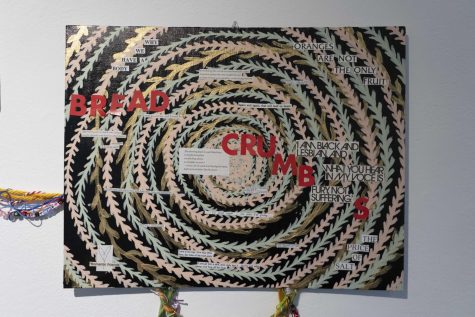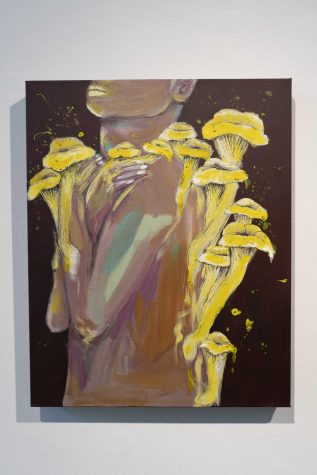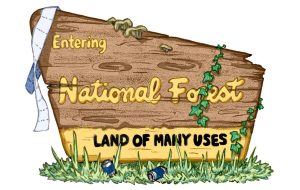Stevens Gallery explores labels in “Queer Ecology” exhibit
December 9, 2021

Peeking one’s head into the Stevens Gallery this week reveals an assortment of poems, pieces and pink sticky notes tacked to walls and scattered over articles of clothing. The exhibit is “Queer Ecology,” curated by Sara Little with contributors Ahmed Elsayed, Lee Thomas, Lukas Zmuidzinas, Aziz Sahbazovic, Renny Acheson and Piper Toohey.
The meaning of “Queer Ecology” is explained in an excerpt at the head of the room: “The aim is to demonstrate diverse sexual and gender expressions within our natural world, as well as how and why we apply certain labels to otherwise unlabeled areas of life and behavior.”
A common misconception is the anthropomorphisation of plants and animals, a fear addressed with nuance in the excerpt.

“The task of Queer Ecology is not to apply human labels to flora and fauna as if they naturally fall within these constructed boxes, but to compare behavior and biology across species in order to broaden our narratives of the natural world and queerness within it,” the plaque says.
Ahmed Elsayed explains in his statement on one of the various plaques that “difference” and oddity is what challenges our notion of normal and how we value it, stating, “Daisies, tulips, chrysanthemums, violets, roses and a plethora of flowers make our world and nature colorful and habitable. Imagine a world where only one color, one type, existed…The allure of harmony is found in the magnificent combination of various tunes; otherwise, playing the same tune over and over again is boring and unsettling.”
In the same vein, Sara Little in her plaque talks about how “Perfect flowers, like lilies and roses, both have masc (pollen-producing) and femme (seed-producing) reproductive parts”.
Embracing our masc and femme qualities, as well as recognizing the variety of ways in which one can simply exist outside of the assigned gender binary, is a huge part of why looking towards nature is so essential to this conversation. When the majority of human representation is within the context of gender roles and identity, nature helps us understand that it’s not about gender or gender identity, but about identity itself, which exists and encompasses gender expression and sex, but is not divided by it.
Lee Thomas elaborates on this concept, saying, “Queerness can dispel hierarchies and unlock parts of ourselves otherwise left untouched. I love being inspired by plants as well as animals during this project because of the ‘asexuality’ of many plants like corn or grasses.”
In keeping with the theme of “dispelling hierarchies” and thinking outside of the gender binary, Renny Acheson said, “I invite you to imagine the vast possibilities of how we define ourselves. I urge you to reflect on how we inhabit different environments.”
Ultimately Queer Ecology, and this exhibit, is about stepping outside of our inherently limiting social constructions by looking at how nature runs things. It’s about finding peace in the way that not only allows for existence outside of said constructs, but encourages diversity of beauty, growth and ways of being. The excerpt at the beginning gets at the heart of this: “The fluidity of natures boundaries and diversity of experience allow LGBTQIA+ individuals to find a home within a space they have largely been excluded from: the so-called natural world.”
Ahmed Elsayed, Lee Thomas and Renny Acheson are employed by The Wire.





